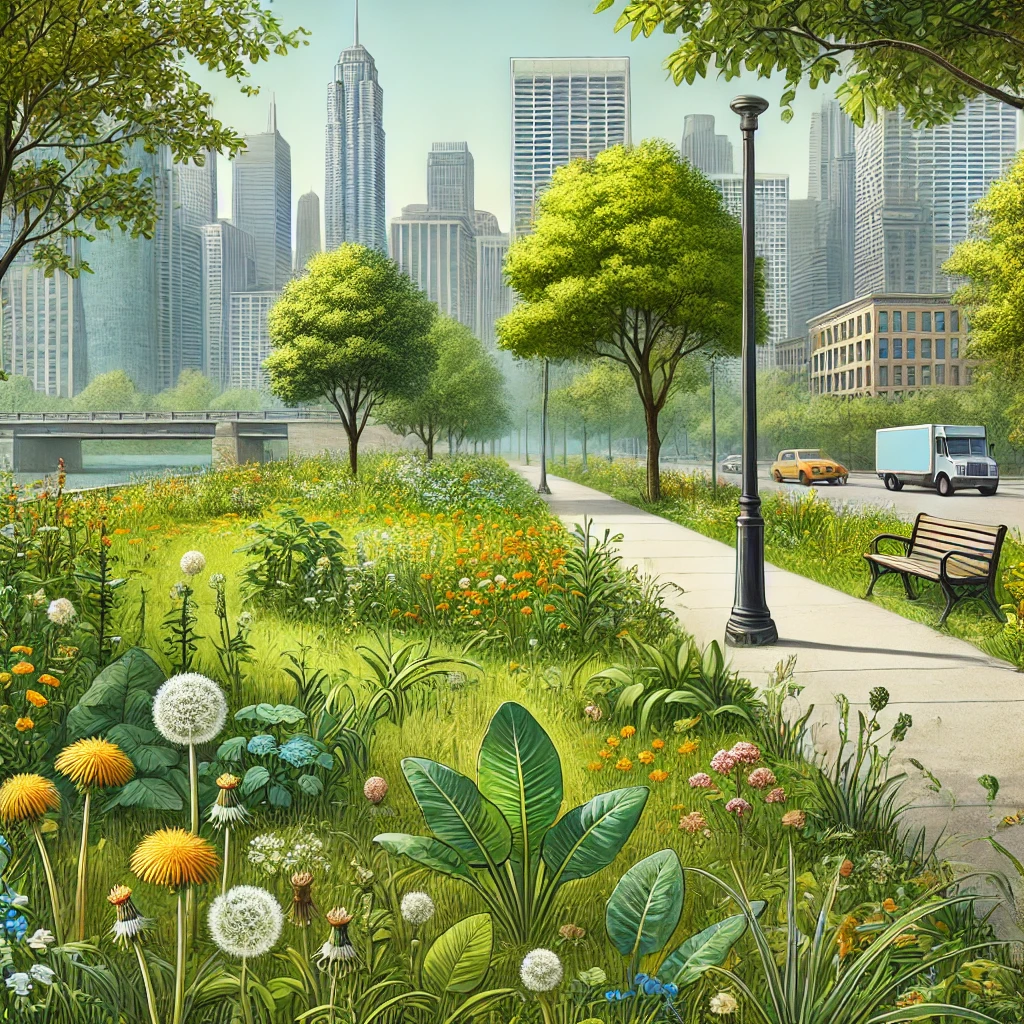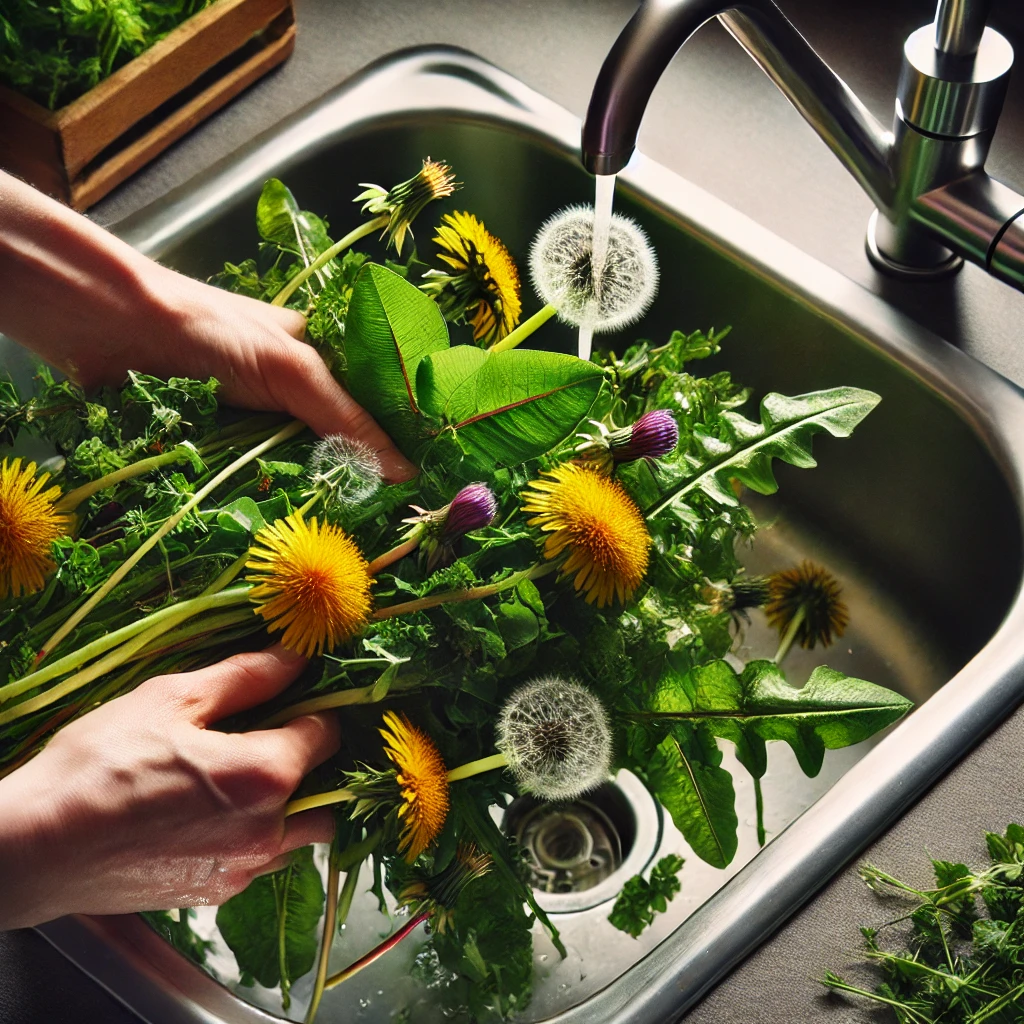Urban foraging and edible plants are not just for the countryside; in an urban crisis, it can be a valuable survival skill, allowing you to source food from unexpected places. Urban areas are home to many edible plants that are nutritious, safe, and readily available. This guide covers basic foraging techniques, how to identify common edible plants, and safety tips for urban foraging.
Why Urban Foraging Matters
In a citywide crisis, food supplies can quickly become scarce, and grocery stores may close or run out of essentials. Foraging for edible plants can help supplement your food stores and provide fresh nutrients that might otherwise be hard to come by. Here are the benefits of urban foraging:
- Increased Food Security: Supplements stored food supplies and adds variety to your diet.
- Nutrient-Dense Options: Many wild plants are rich in essential vitamins and minerals.
- Self-Sufficiency: Builds resilience by teaching you to source food independently.

Safety Tips for Urban Foraging
Foraging in the city requires caution, as plants may grow in contaminated areas. Follow these safety tips to ensure your finds are safe to eat:
- Avoid Polluted Areas: Don’t forage near busy roads, industrial sites, or areas treated with pesticides.
- Use Identification Guides: Always confirm plant identification using a reliable guidebook or app. If in doubt, don’t eat it.
- Wash Everything Thoroughly: Rinse plants thoroughly to remove dirt, pollutants, and potential contaminants.
- Be Mindful of Laws: Some parks or city spaces prohibit foraging, so check local regulations to avoid fines.
Common Edible Plants in Urban Areas
Many edible plants thrive in cities, often considered “weeds” but packed with nutrients. Here are some common edible plants that are easy to identify:
1. Dandelions
- Identification: Recognizable by their bright yellow flowers, serrated leaves, and round seed heads.
- Edible Parts: Leaves, flowers, and roots are edible. Leaves are slightly bitter but rich in vitamins A, C, and K.
- Preparation Tips: Use young leaves in salads, cook older leaves to reduce bitterness, and try dandelion roots roasted as a coffee substitute.
2. Clover
- Identification: Small, round leaves with three leaflets, and small white or pink flowers.
- Edible Parts: Both the leaves and flowers are edible, with a mild, slightly sweet flavor.
- Preparation Tips: Add raw to salads, cook in stews, or dry the flowers for tea.
3. Plantain (Not the Banana)
- Identification: Broad, flat leaves with prominent veins that grow close to the ground.
- Edible Parts: The leaves and seeds are edible, with a slightly bitter taste.
- Preparation Tips: Use young leaves in salads or cook older leaves like spinach to reduce bitterness.
4. Wild Mustard
- Identification: Tall plants with yellow flowers and slender, toothed leaves.
- Edible Parts: Leaves, flowers, and seeds are edible, with a spicy, mustard-like flavor.
- Preparation Tips: Use leaves in salads or cooked dishes for a peppery flavor; flowers make a great garnish.
5. Wood Sorrel
- Identification: Small, heart-shaped leaves that resemble clover, with small yellow flowers.
- Edible Parts: Leaves, flowers, and stems are edible and have a tart, lemony flavor.
- Preparation Tips: Use sparingly in salads or as a seasoning; avoid overconsumption due to oxalic acid.
Foraging Techniques for Urban Settings
Learning how to forage effectively can maximize your yield and help you find clean, nutritious plants.
1. Scout for Green Spaces
Public parks, community gardens, and abandoned lots are good foraging locations. Just remember to avoid polluted areas and respect any private property or park rules.
2. Use a Field Guide or App
Take a pocket field guide or use an identification app to help you distinguish edible plants from harmful look-alikes. Reliable identification is key to safe foraging.
3. Harvest Responsibly
Avoid over-harvesting in any area to allow plants to regrow. Take only what you need, especially in shared community spaces. Harvesting small amounts from multiple locations is often best to minimize environmental impact.
4. Timing is Everything
Foraging in the morning is ideal, as plants are hydrated and fresh. During dry seasons or hot weather, urban plants may wither, so aim to forage after rain for the best results.

4 Step Edible Plant Preparation and Storage Tips
Once you’ve foraged your plants, follow these tips to prepare and store them safely:
- Wash Thoroughly: Rinse plants with clean water and consider using a vegetable wash.
- Store Properly: Fresh herbs and greens can be stored in the fridge for a few days. Dry any extra herbs for later use by hanging them in a dry, cool area.
- Cook When Possible: Cooking plants can reduce bitterness, soften tough leaves, and make nutrients more accessible.
1. Common Edible Plants in Urban Areas
Cities are home to a surprising variety of edible plants that thrive in overlooked spaces. Dandelions, with their bitter leaves and versatile flowers, are a favorite among foragers. Purslane, often found in sidewalk cracks, is rich in omega-3 fatty acids and can be added to salads or stir-fries. Chickweed, a nutrient-dense green, grows abundantly in shady areas. Other edible urban plants include plantain (great for teas and poultices) and wild garlic, which can elevate your dishes with its flavorful bulbs and leaves. Learning to recognize these plants can transform your perception of the urban landscape.
2. Tools and Resources for Safe Foraging
Safety is paramount when foraging in urban environments. Equip yourself with a sturdy basket, a pair of gardening gloves, and scissors or a small knife for clean harvesting. Use a trusted foraging field guide or mobile app to accurately identify plants and avoid poisonous look-alikes. It’s also wise to learn about your local environment’s history—some areas may have soil contamination or be treated with harmful chemicals. A portable plant identification guide is a must-have for beginners, and consulting local foraging groups or workshops can enhance your skills and confidence.
3. Foraging Etiquette and Ethics
Sustainable foraging practices are essential to ensure urban plant populations remain healthy. Always harvest responsibly by taking only what you need, leaving plenty for wildlife and future growth. Avoid uprooting entire plants unless necessary, and focus on pruning leaves, flowers, or fruits. Respect private property boundaries and seek permission if foraging on someone else’s land. Additionally, clean up any waste or debris left behind during your foraging trips. Ethical foraging not only benefits the environment but also fosters a positive perception of urban foragers.
4. Preparing and Cooking Foraged Foods
Once you’ve gathered your urban harvest, the next step is to prepare and enjoy your bounty. Wash all plants thoroughly to remove dirt and any potential contaminants. Dandelion greens can be sautéed with garlic for a simple side dish, while purslane adds a tangy crunch to salads. Wild garlic can be blended into pestos or soups, and chickweed makes a delicious addition to omelets or stir-fries. Experimenting with different recipes will help you appreciate the unique flavors and nutritional benefits of these wild urban plants.
Conclusion
Urban foraging can be a valuable skill in any survival situation, providing a sustainable food source from your surroundings. By learning how to safely identify and harvest edible plants in the city, you gain independence, add fresh nutrients to your diet, and contribute to a more sustainable approach to survival. With the right knowledge and caution, foraging in urban environments is an achievable and rewarding skill.
